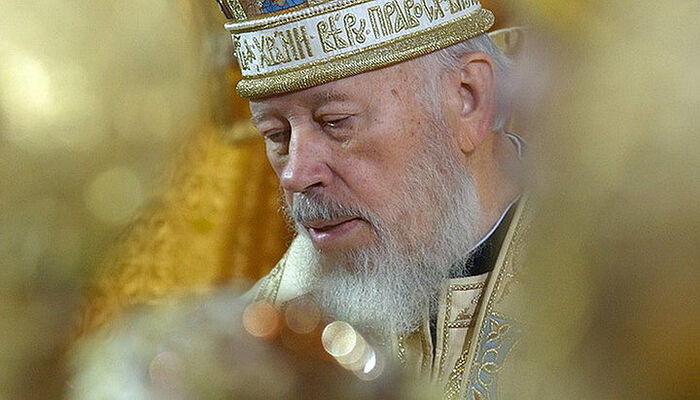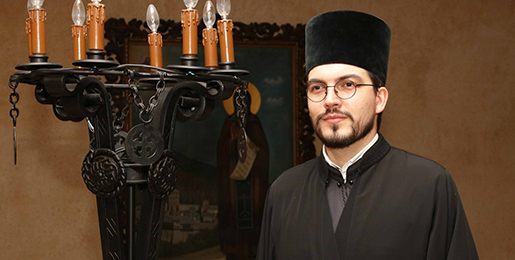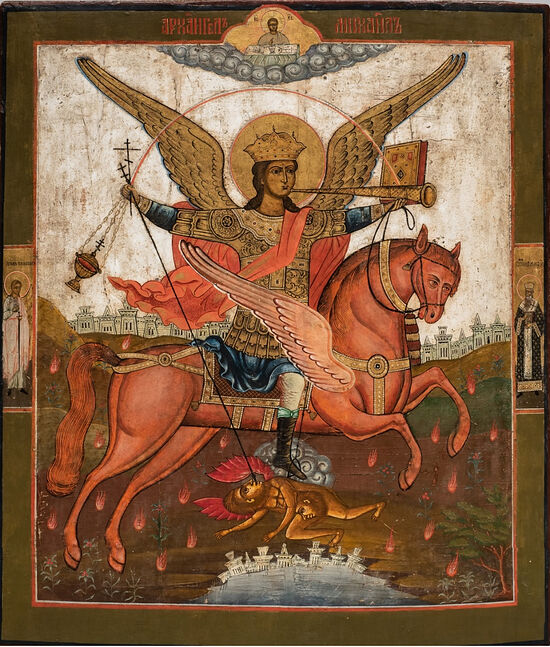Today, in the Ukrainian media sphere, especially after the introduction of Poroshenko's “tomos” into the religious life of Ukraine, and the promulgation of a new schism by the Patriarch of Constantinople Bartholomew, which endangers the unity of not only the Ukrainian Orthodox Church, but the entire world Orthodoxy, one can hear that the so-called “autocephaly of the Ukrainian Orthodox Church,” after the collapse of the USSR, was the longed-for dream of the majority of the country's Orthodox believers, headed by their Primate, His Beatitude, Metropolitan Vladimir (Sabodan; reposed 07/05/2014), who allegedly for the twenty-two years of his primateship in Ukraine, advocated for the “complete and final separation” (of the UOC) from the Russian Orthodox Church, and the acquisition of autocephaly for the UOC with the status of a Local Church. But is that really the case? This issue was discussed in the conference hall of Kiev Theological Academy at a round table dedicated to the memory of His Beatitude Metropolitan Vladimir, on the day of his 85th birthday—November 23 of this year.
 Representatives of the older generation of the Kievan clergy, who knew Metropolitan Vladimir when he was the Rector of Moscow's theological schools, as well as hierarchs of the UOC, and representatives of state, cultural and educational organizations, and the Orthodox community were invited to the commemorative event. The words of each participant in the meeting were filled with great love for the reposed hierarch, as they expressed memories of his hierarchical wisdom, simplicity, accessibility, and sympathy for each person, be they a student, peasant or academic, and concerning the theological, literary and poetic heritage of Metropolitan Vladimir.
Representatives of the older generation of the Kievan clergy, who knew Metropolitan Vladimir when he was the Rector of Moscow's theological schools, as well as hierarchs of the UOC, and representatives of state, cultural and educational organizations, and the Orthodox community were invited to the commemorative event. The words of each participant in the meeting were filled with great love for the reposed hierarch, as they expressed memories of his hierarchical wisdom, simplicity, accessibility, and sympathy for each person, be they a student, peasant or academic, and concerning the theological, literary and poetic heritage of Metropolitan Vladimir.

 Deacon Dr. Aleksandar Prascevic defended his postdoctoral project on “The Contribution of the Serbian Orthodox Church to the Dialogue with Muslims (1920-2020)” at the School of Theology of the Aristotle University of Thessaloniki, under scientific supervision of professor Dr. Angeliki Ziaka.
Deacon Dr. Aleksandar Prascevic defended his postdoctoral project on “The Contribution of the Serbian Orthodox Church to the Dialogue with Muslims (1920-2020)” at the School of Theology of the Aristotle University of Thessaloniki, under scientific supervision of professor Dr. Angeliki Ziaka.  The question * of the date of the election session of the Holy Assembly of Bishops at which the 46th Serbian Patriarch should be elected is primarily a church issue and primarily concerns the bishops, clergy, monastics and the faithful of the Serbian Orthodox Church.
The question * of the date of the election session of the Holy Assembly of Bishops at which the 46th Serbian Patriarch should be elected is primarily a church issue and primarily concerns the bishops, clergy, monastics and the faithful of the Serbian Orthodox Church. The Revelation of St. John the Theologian. Talk 1
The Revelation of St. John the Theologian. Talk 1 The peculiarity of this feast is that it is based on the apocrypha—the Protoevangelium of James. This tradition has sufficient authority, since it was used by the holy fathers:
The peculiarity of this feast is that it is based on the apocrypha—the Protoevangelium of James. This tradition has sufficient authority, since it was used by the holy fathers: Representatives of the older generation of the Kievan clergy, who knew Metropolitan Vladimir when he was the Rector of Moscow's theological schools, as well as hierarchs of the UOC, and representatives of state, cultural and educational organizations, and the Orthodox community were invited to the commemorative event. The words of each participant in the meeting were filled with great love for the reposed hierarch, as they expressed memories of his hierarchical wisdom, simplicity, accessibility, and sympathy for each person, be they a student, peasant or academic, and concerning the theological, literary and poetic heritage of Metropolitan Vladimir.
Representatives of the older generation of the Kievan clergy, who knew Metropolitan Vladimir when he was the Rector of Moscow's theological schools, as well as hierarchs of the UOC, and representatives of state, cultural and educational organizations, and the Orthodox community were invited to the commemorative event. The words of each participant in the meeting were filled with great love for the reposed hierarch, as they expressed memories of his hierarchical wisdom, simplicity, accessibility, and sympathy for each person, be they a student, peasant or academic, and concerning the theological, literary and poetic heritage of Metropolitan Vladimir. According to Holy Tradition, the Entry of the Most Holy Theotokos into the Temple took place in the following manner. The parents of the Virgin Mary, Saints Joachim and Anna, praying for an end to their childlessness, vowed that if a child were born to them, they would dedicate it to the service of God.
According to Holy Tradition, the Entry of the Most Holy Theotokos into the Temple took place in the following manner. The parents of the Virgin Mary, Saints Joachim and Anna, praying for an end to their childlessness, vowed that if a child were born to them, they would dedicate it to the service of God.